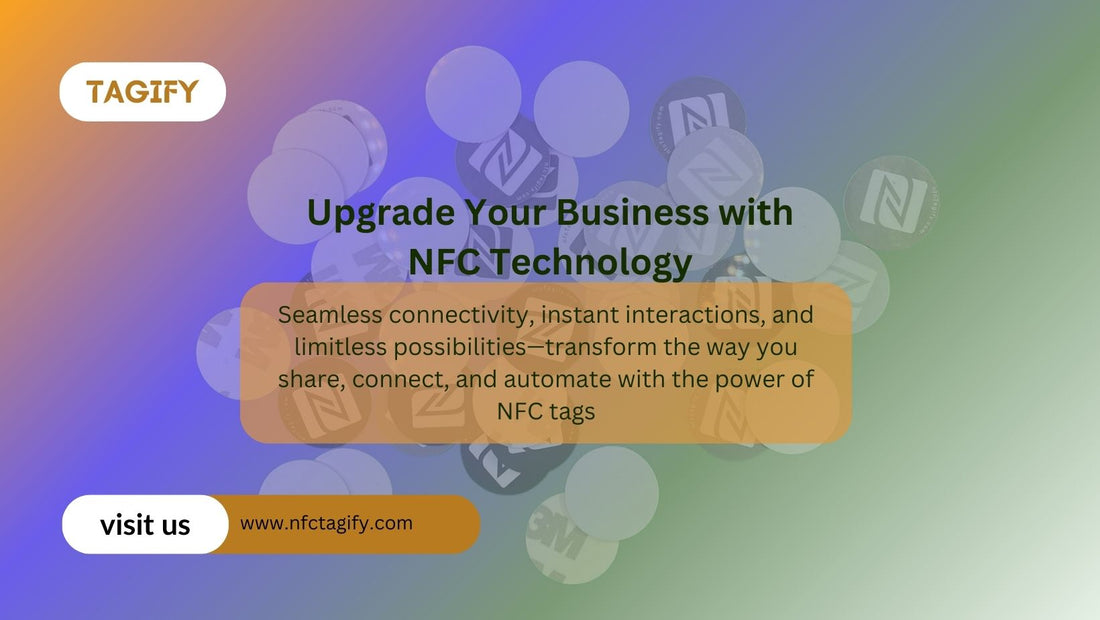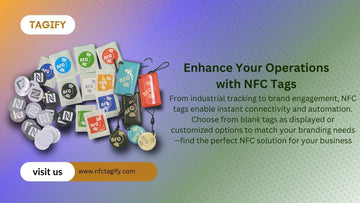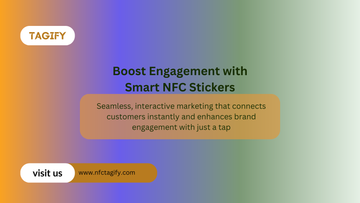How NFC Tags Work

The Power of NFC Tags: Everything You Need to Know
Near Field Communication (NFC) technology has transformed how we interact with everyday objects, making communication between devices seamless and efficient. NFC tags, small and versatile, are widely used in marketing, security, payments, and automation. This article explores NFC tags, their functionality, types, applications, benefits, and the future of this innovative technology.
What Are NFC Tags?
NFC tags are small, wireless chips that store data and communicate with NFC-enabled devices like smartphones and tablets. These tags operate on radio frequency identification (RFID) technology and work within a short range, typically a few centimeters. Once scanned or tapped, the tag can trigger various actions, such as opening a website, sharing contact details, or enabling smart home functions.
Unlike QR codes, which require scanning through a camera app, NFC tags work instantly when placed near a compatible device, offering a faster and more user-friendly experience.
How Do NFC Tags Work?
NFC tags contain three key components: a microchip, an antenna, and a substrate (material holding the tag together). When an NFC-enabled device is near the tag, the tag's antenna receives power from the device, activating the chip to send stored information.
The communication process follows a simple tap-and-go mechanism, requiring no battery or internet connection. NFC tags operate in passive mode, meaning they draw power from the scanning device, making them highly energy-efficient.
Common Applications of NFC Tags
NFC tags have found their way into numerous industries due to their ease of use and flexibility. Some of the most common applications include:
1. Contactless Payments and Transactions
NFC technology powers mobile payment solutions like Google Pay and Apple Pay, allowing users to make quick and secure payments by simply tapping their smartphones on NFC-enabled terminals.
2. Smart Business Cards
Digital business cards with NFC technology allow professionals to share contact details instantly with a tap. They eliminate the need for printed cards while ensuring seamless networking.
3. Product Authentication and Anti-Counterfeiting
Brands integrate NFC tags into their products to verify authenticity. Customers can scan the tag to confirm that the item is genuine and get additional details about the product.
4. Smart Posters and Marketing
Businesses use NFC-enabled posters and stickers in advertising campaigns. Customers can tap their phones to access promotions, product pages, or event registrations without manually typing URLs.
5. Smart Home Automation
NFC tags simplify everyday tasks in smart homes. They can be programmed to turn on lights, adjust thermostats, or connect to Wi-Fi by tapping a phone against the tag.
6. Healthcare and Medication Management
Hospitals use NFC tags to track patient records and medications, ensuring accurate administration and improving efficiency.
7. Access Control and Security
NFC technology is widely used in keyless entry systems for offices, hotels, and homes. Employees or guests can access restricted areas using NFC-enabled ID cards or wristbands.
Types of NFC Tags
NFC tags come in various types, each designed for specific applications:
1. NFC Stickers and Labels
These are the most common and affordable tags, often used for marketing, smart home automation, and inventory tracking.
2. On-Metal NFC Tags
Standard NFC tags do not work on metal surfaces. On-metal NFC tags have a special layer that enables them to function correctly on metallic surfaces.
3. NFC Cards
NFC business cards and access control cards offer a durable, reusable solution for sharing information or granting access.
4. NFC Keyfobs and Wristbands
Popular in access control and event management, NFC keyfobs and wristbands provide convenience for users to unlock doors or make payments without needing a phone.
5. Industrial NFC Tags
These robust NFC tags are designed for harsh environments, making them ideal for asset tracking in manufacturing and logistics.
Choosing the Right NFC Tag for Your Needs
Selecting the right NFC tag depends on several factors, including:
- Material: If attaching to metal, use an on-metal NFC tag.
- Durability: For outdoor or industrial use, opt for rugged NFC tags.
- Memory Capacity: Consider the amount of data to be stored on the tag.
- Reusability: Some NFC tags allow rewriting, while others are read-only.
For business applications, high-quality NFC stickers or cards provide the best balance of cost and functionality.
How to Encode and Use NFC Tags
Encoding an NFC tag is a simple process requiring only a smartphone or NFC writer. Here’s how:
- Choose an NFC encoding app: Use apps like NFC Tools or NFC TagWriter.
- Select an action: Assign a URL, contact details, Wi-Fi credentials, or a command.
- Write the data to the tag: Tap your smartphone against the tag to program it.
- Test the tag: Scan it to ensure it performs the assigned function.
Many businesses use NFC tags to improve customer interaction, from directing users to product pages to automating routine tasks.
Benefits of Using NFC Tags
1. Convenience and Speed
NFC tags work instantly without requiring apps, making them user-friendly and efficient.
2. Contactless and Hygienic
With growing concerns over hygiene, NFC tags provide a touch-free solution for payments, access control, and information sharing.
3. Versatile and Customisable
NFC tags come in various forms and can be programmed for multiple uses, from marketing campaigns to home automation.
4. Cost-Effective
Once set up, NFC tags require minimal maintenance and can be used repeatedly, making them a cost-effective investment for businesses and individuals.
5. Enhanced Security
Unlike QR codes, which can be copied or tampered with, NFC tags offer better security, as they can be locked to prevent rewriting.
Future Trends in NFC Technology
The potential for NFC technology continues to expand, with new applications emerging in various sectors:
- Wearable NFC Devices: Smartwatches and fitness bands will integrate NFC for secure transactions and data sharing.
- NFC-Enabled IoT Devices: The Internet of Things (IoT) will leverage NFC for seamless device pairing and automation.
- Blockchain and NFC Integration: Businesses will use blockchain technology with NFC for advanced product authentication and secure transactions.
- Public Transport and Smart Cities: NFC is set to play a crucial role in contactless ticketing and urban mobility solutions.
As technology evolves, NFC will become more embedded in daily life, driving efficiency and convenience across industries.
Final Thoughts
NFC tags are transforming the way businesses and individuals interact with technology. Whether for marketing, security, payments, or automation, NFC tags offer a smart and simple solution for countless applications.
We at NFC Tagify provide all sorts of NFC solutions or you may contact us:
Tel. 01600800080
Email: info@nfctagify.com









